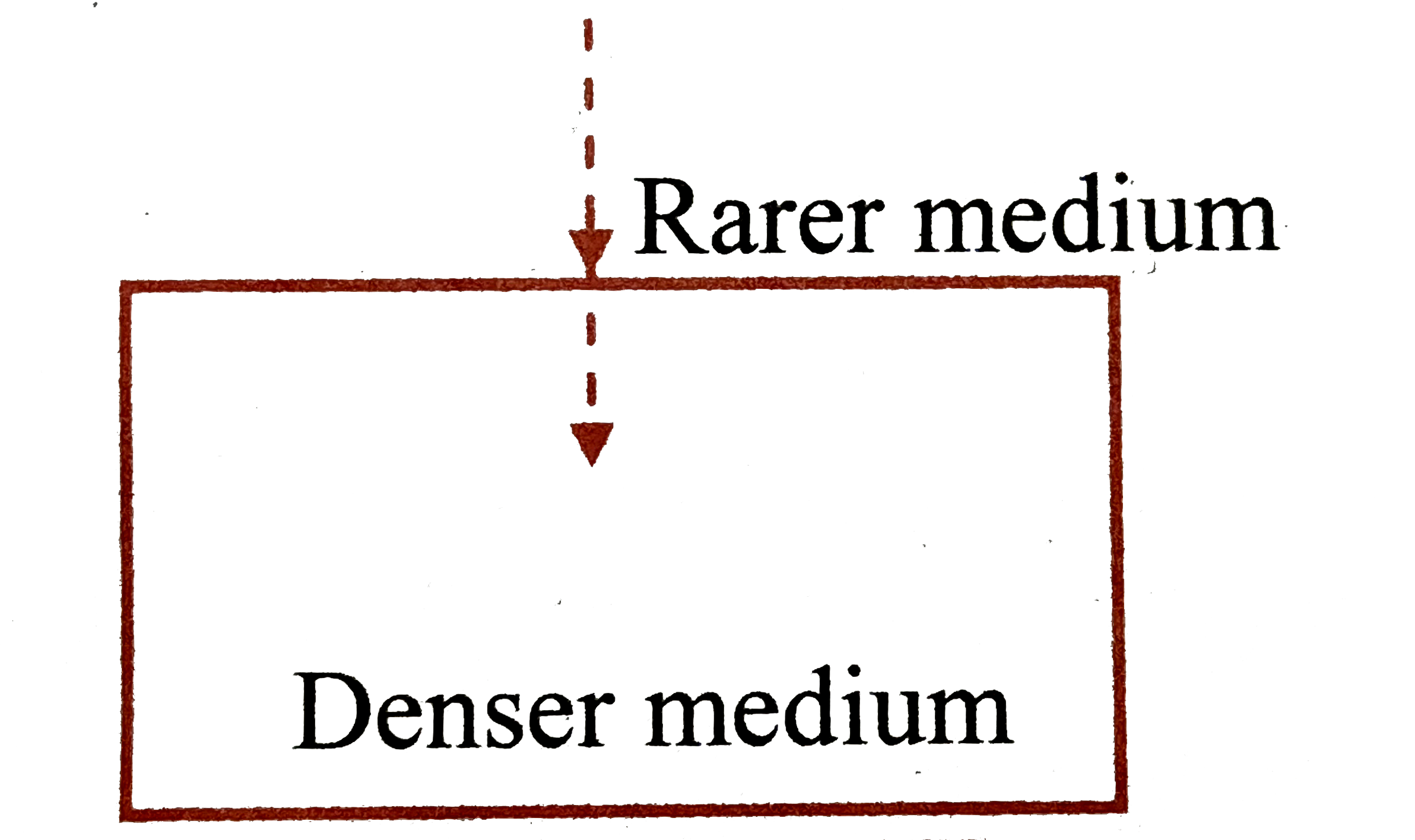State using a neat diagram, what happens to the path of light
when light ray is incident normally at the boundary between two media.
Video Solution
Text Solution
When a light ray is incident normally at the boundary between two media i.e., i = 0, it does not change its direction and hence does not get refracted. i.e., r = 0

|
Topper's Solved these Questions
- Refraction of lightBook:TARGET PUBLICATIONChapter:Refraction of lightExercise:Give reasons
Explore 2 Videos
- Refraction of lightBook:TARGET PUBLICATIONChapter:Refraction of lightExercise:Distinguish between
Explore 1 Video
- Refraction of lightBook:TARGET PUBLICATIONChapter:Refraction of lightExercise:Match the following
Explore 1 Video
- MODEL QUESTION PAPER PART-2Book:TARGET PUBLICATIONChapter:MODEL QUESTION PAPER PART-2Exercise:QUESTIONS
Explore 2 Videos
- SOCIAL HEALTH Book:TARGET PUBLICATIONChapter:SOCIAL HEALTH Exercise:CHAPTER ASSESSMENT
Explore 3 Videos
Similar Questions
Knowledge Check
When a ray of light is incident normally on a surface, then
Atotal internal reflection takes placeBit passes undeviatedCit undergoes dispersionDit gets absorbed by the surfaceWhen a ray of light is incident normally on a surface, then
A90∘B0C45∘Dnone of theseWhen a ray of monochromatic light is incident obliquely on the interface of two media,
Aall the light is reflected back into same medium only.Ball the light is transmited (refrected) into other medium.Conly partially reflected back into the same medium.DPart of light is reflected back into the same medium.
What happens to a light ray that is incident on a plane mirror normally?
View SolutionWhat happens to a light ray that is incident on a plane mirror normally?
View SolutionDistinguish between unpolarised and plane polarised light. An unpolarised light is incident on the boundary between two transparent media. State the condition when the reflected wave is totally plane polarised. Find out the expression for the angle of incidence in this case.
View SolutionWhen a light ray is incident normal to the interface between any two media,the angle of incidence is zero.
View SolutionCopy and complete the diagram below to show what happens to the rays of light when they pass through the concave lens.

View Solution